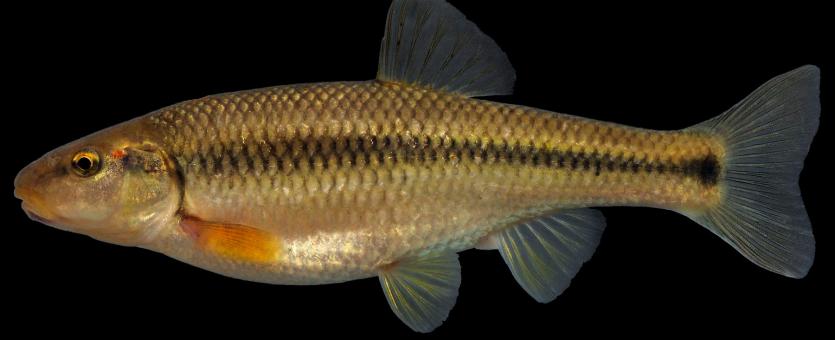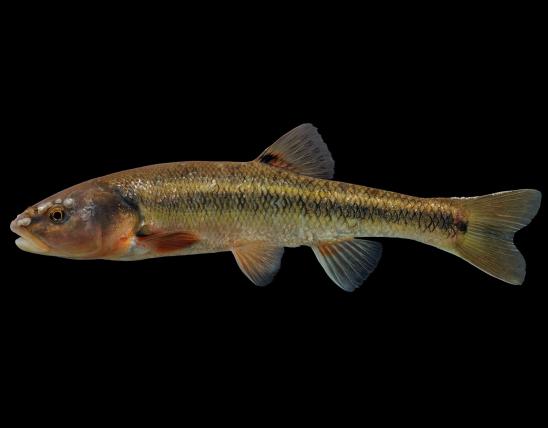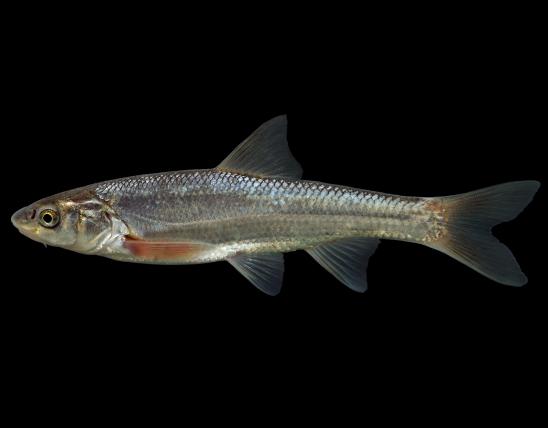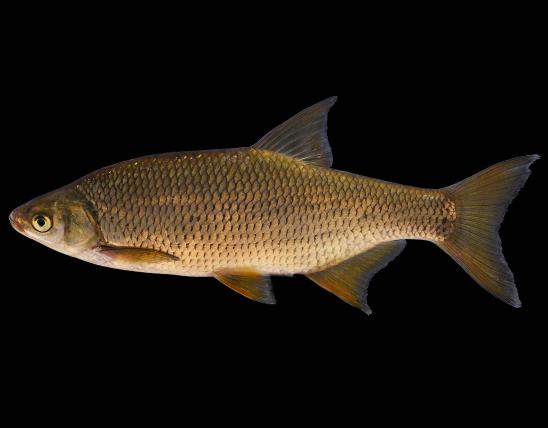
The hornyhead chub is a moderately large, slender, cylindrical minnow with a rather large, nearly horizontal mouth. A small, conical barbel is present at the corner of the mouth. The back and upper sides are olive brown with large, dark-edged scales, giving a crosshatched effect. The lower sides and belly are yellowish white. Males commonly have tubercles (bony projections) on top of the head and a prominent red spot behind the eye.
Similar species: The redspot chub is very similar in appearance and ecology, but it has a more limited and separate distribution, occurring in our state only in the Ozark portions of the Spring and Elk stream systems of southwestern Missouri.
Total length: 5 to 7 inches; maximum about 10 inches.

Occurs in all principal stream systems of the Ozarks not occupied by the redspot chub (which in Missouri occurs only in the Ozark portions of the Spring and Elk stream systems of southwestern Missouri).
Habitat and Conservation
Clear Ozark streams with permanent flow and clean gravel. Adults are found near riffles while young are usually found in pools, often hiding within plants.
Food
Omnivorous, feeding on both plants and animals. Prey animals are mostly insects.
Status
Nongame.
Life Cycle
Lifespan can be 3 or 4 years. Most active in daytime. In late spring, males build conspicuous mounds of gravel 1 to 3 feet in diameter on which to spawn.
Human Connections
Since about 1900, the hornyhead chub has disappeared or declined in many portions of its former range in Missouri. Intensive cultivation, with subsequent increase in siltation and intermittent flow in streams, may be important factors in the declining abundance of this chub in parts of Missouri.
Ecosystem Connections
Numerous other minnows use hornyhead chub nests for spawning.































